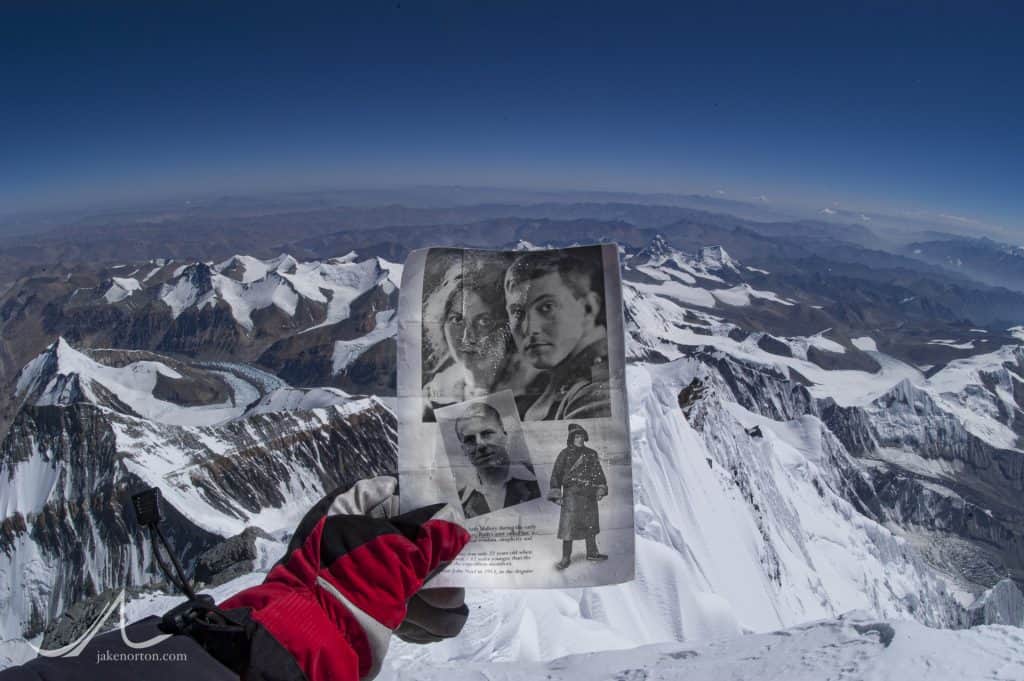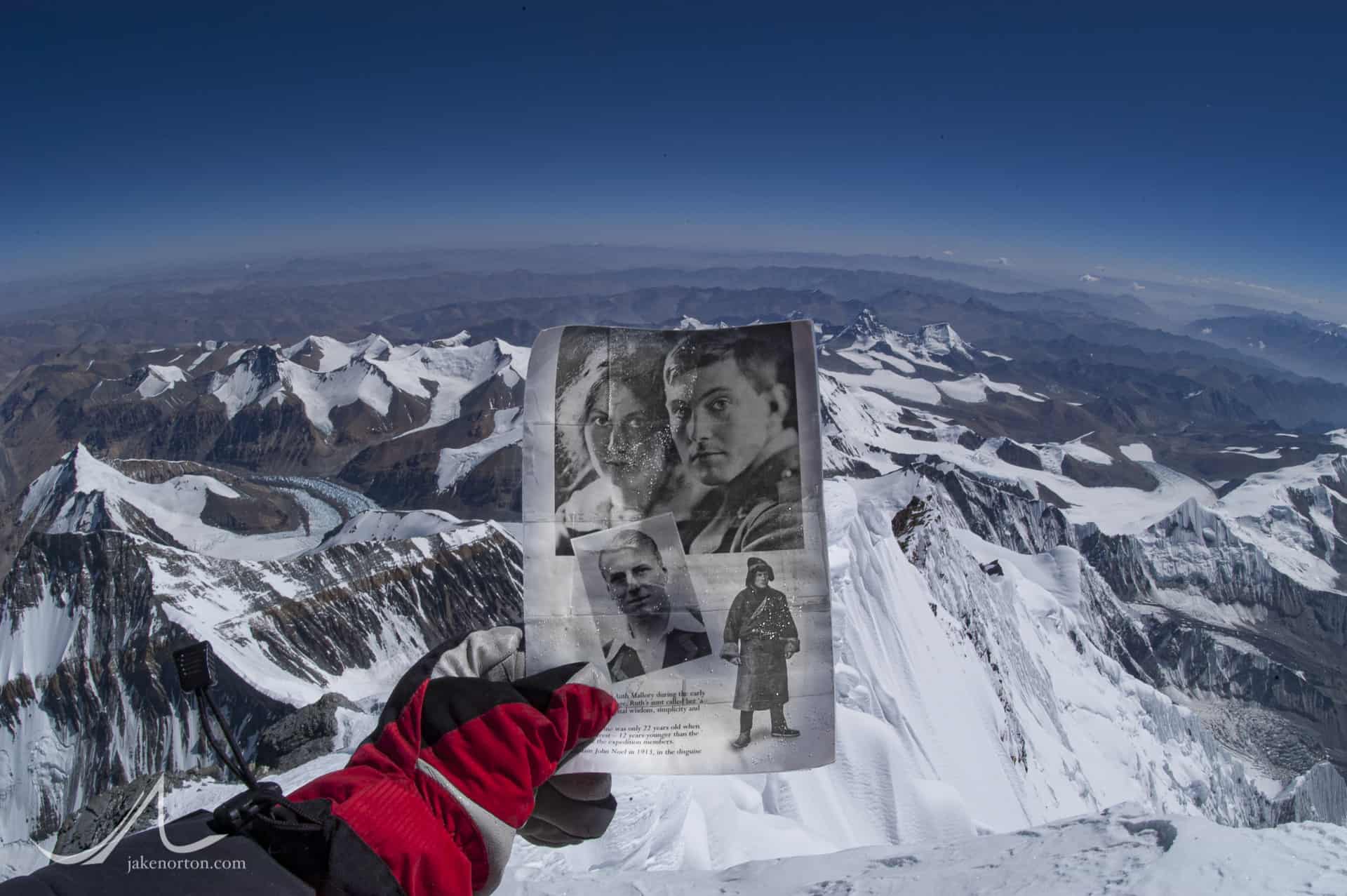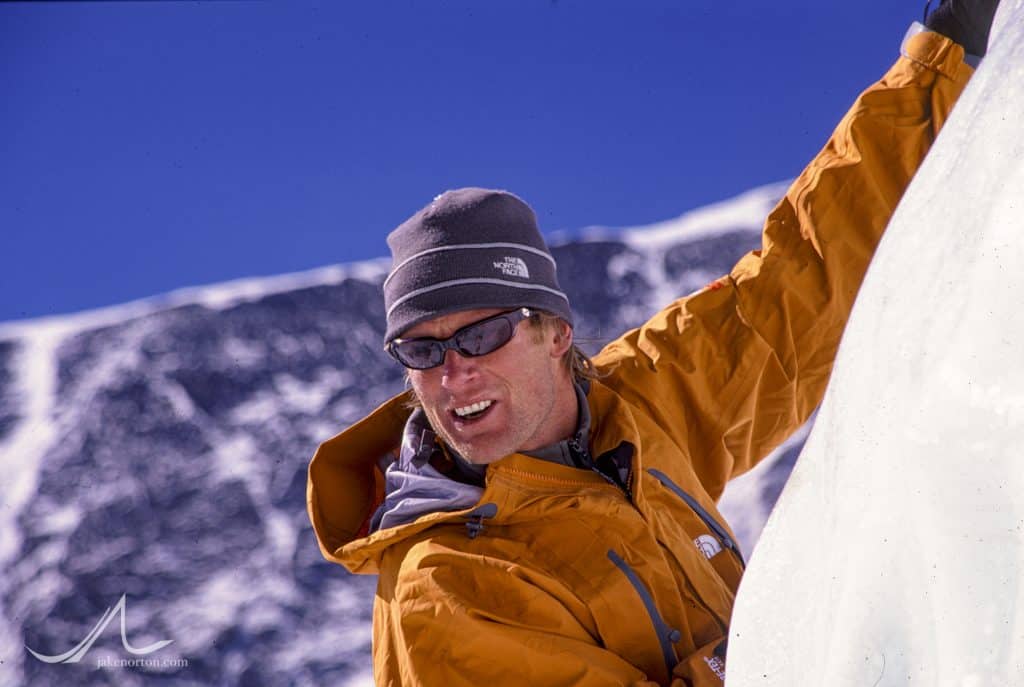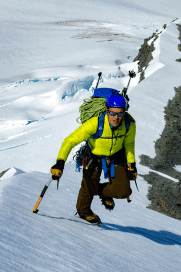It was 83 years ago today that George Leigh Mallory and Andrew Comyn Irvine took their final, fateful steps up the Northeast Ridge on Mount Everest, hoping to reach the 29,035 foot Top of the World…and become the first people to do so.

As I mentioned on a CBS segment several years ago, while our 1999 Mallory & Irvine Research Expedition team uncovered many clues about the final days and hours of the pioneering duo, we came to no definitive conclusions about the greatest of mountaineering mysteries: Did Mallory & Irvine reach the summit of Everest on June 8, 1924…some 29 years before Sir Edmund Hillary and Sherpa Tenzin Norgay? (I returned to Everest in 2001 and again in 2004 to search for additional clues, but still no firm answers.)
When asked, as I was today when presenting my Lost on Everest keynote, about whether or not Mallory & Irvine reached the top in 1924, I always am clear about 2 things:
- We cannot prove conclusively that Mallory & Irvine reached the top of the world in 1924.
- We cannot disprove conclusively that Mallory & Irvine reached the top of the world in 1924.
Basically, we know more than we did before 1999, but still have no firm answers, only conjecture.
As Kraig over at the Adventure Blog has written, Conrad Anker, Leo Houlding, cameraman Ken Sauls, and several other friends of mine are currently on an expedition to retrace the footsteps of Mallory & Irvine and put more pieces of the puzzle together. Anker and Houlding will climb in vintage gear and the film and support team will take down the ladders and fixed lines on the Second Step to make it look as it did back in 1924.
Interestingly, however, free-climbing the Second Step will not be a first time effort. As noted on MountEverest.net, Spaniard Oscar Cadiach free climbed the Step back in 1985 without oxygen and in full-monsoon conditions. Pretty amazing feat! And, the climb was repeated in 2001 by Swiss climber Theo Fritsche. Interestingly, both Fritsche and Cadiach rated the climb at about 5.7-5.8, which falls within Mallory’s climbing skill level on technical rock.
One thing MountEverest.net and others have left out of the discussion, however, is the 1960 Chinese ascent of Everest via the Northeast Ridge. In that year, the Chinese – who had occupied Tibet since 1949 and thus had open access to the mountain – made the first recorded ascent of the mountain from the north, and climbed the Second Step without the ladder. (That was installed by the 1975 Chinese Everest Expedition.)
What is interesting here is the technique used to ascend the Second Step. With a tag-team approach, climber Chu Yin-hua took off his boots and gloves, stood on the shoulders and then head of teammate Liu Lien-man, and was able to pull himself to the top of the Step that way. He paid dearly with frostbitten fingers and toes, but his efforts enabled his team to reach the top several hours later.
While climbing the Second Step in modern style, using modern technique, is interesting and makes for good film footage, we should not forget that, in Mallory’s day, using the tried-and-true ten fingers – or head standing as the Chinese did – was not only acceptable technique, it was used quite often.
And, let’s remember that Andrew Irvine was over 6 feet tall…probably taller than Liu Lien-man!
Combine those techniques with Mallory’s obsession with reaching the top in 1924, and you have a strong case for them pulling it off.
But, again, we have no proof…either way.




I started a preliminary project on the summit times of the Russian Andre B. during the 1996 expedition – and somehow got over to Mallory in the 1922 expedition when crossing the slope he lost seven sherpa. My data suggests, by the names of the Sherpa to each meaning one of the seven days of the week. How this relates to Mallory is: He noted much grief from the loss, and stated this on several occassions as reported in later written books on the subject. What if: Mallory did not plan to come off the mountain? I know that sounds “rather odd”, but there was a matter of trust. Odd Hypothesis – but does open some additional doors to consider both the summit attained and a personally acknowledged debt paid, and of course: the “because they are thier” comments, have always ment to me that Mallory was not being trite in his statement as reported, but refering to the ancient Celtic Ideals and the source thereof
Jake,
Something occurred to me just yesterday, something about the Second Step, and the embattled attempts to prove that M&I might have climbed it. Like myself and Michael Tracy, you believe that M&I most likely reached the summit.
[https://jakenorton.com/what-really-happened-to-george-mallory-andrew-irvine-part-ii/]
However, you also believe that the NE Ridge and Steps may have been their preferred route. You may be right. Odell described the two figures appearing at the base of one of the Steps. First one surmounted the Step 'with alacrity', and then the other did likewise. If this happened at the First or Third Step, or on any other rise along the Ridge except the Second Step, why didn't they proceed roped together in single file, staying close to each other? Could it be that they climbed a rope to the top, which Mallory had set earlier, having free-climbed, with his consummate rock skills, the Second Step? He then descended the rope to test it, to convince Irvine, and to pick up his gear for the ascent. Two on the rope at once would have been hazardous, so they climbed separately. Odell's confusion about the Steps and his surprise at the late hour of M&I's location now becomes understandable, as Mallory must have taken up several hours in performing the feat (like the Chinese in 1960). The seeming 'synchronicity' of Odell's sighting with the climb of the Step was due simply to the opportune break in the weather. The late summitting, and the descent across the Yellow Band after dark, and the consequent mishap now also become understandable.
Jake and mountain friends: With our collective mountaineering and scientific brains, we may in this manner yet hope, in these centennial years, to generate a solution to the Mallory and Irvine mystery. By this I mean we may assemble information, form hypotheses, propose research techniques, and suggest items to be found on the upper slopes of Mt. Everest and specific places to seek them. But no amount of armchair science can yield actual results: discovery can only occur on site, accomplished by real mountaineers and scientists working diligently and in cooperation under specific guidelines for exploration. I believe this is the best approach to success, though I suspect that most of the details will have to be worked out by others more knowledgeable than myself in the practical necessities of the expeditions. I therefore encourage a group effort, and welcome comments posted on all relevant site pages, including my own https://cywelsian.wordpress.com/2021/08/21/mallory-meta-analysis/
S.I. Wells, Donner Pass, 24 August 2021
Hi Jake.. I read somewhere that Chinese found some oxygen above second step..
Is that maybe true or just rumors..?
And one more question,is there any chance that M&I pass under second step and then they came out around third step where Odell saw at 12:50..?
This is a tempting thought, but personally I doubt that there is a viable route in that area. I know Michael Tracy insists it exists, but Norton did not find one on June 4, 1924, Wager, Wyn-Harris, and Frank Smythe did not find a suitable passage in 1933, and when Messner climbed similarly in 1980, he did not break up to the Ridge but rather toward the Pyramid, as did the Australians in 1984. So, it seems to be highly suspect that a feasible route from below the Grey Band up to the Third Step exists. But, there's always a possibility!
Odell actually said that he saw the pair on the 'last step but one FROM the base of the summit pyramid'. Counting out FROM the summit pyramid, that would make it the First Step. This also makes sense in relation to the speed of the two indivuduals as observed by Odell - they could not have ascended the Second Step at the speed he described.
My take, from the evidence: they left late (oxygen bits in the CVI tent). Slow progress because of weather & oxygen problems. Reached the First step at 12.50, where they were observed by Odell. Reached the Second step, very tired, at a time when it was obvious they couldn't go on without being benighted, especially after assessing the Second Step plus any way of pasing it on the North Face. Headed back in v bad weather to beyond the First Step & discarded oxygen. M asked I to put down his ice-axe and give him a tight rope while he tried to find the best downward route. After some time, M slipped and fell, and pulled I off in so doing.
Great post,Thank you for sharing
https://www.teamhimalaya.com/trip/everest-base-camp-trek
Some engaging follow-up conversation with one Jim Brennan on my WordPress site: https://cywelsian.wordpress.com/2021/08/31/emergency-posting-afghanistan-disaster/comment-page-1/#comment-21
including
You are quite right to say that one should not discount any plausible alternative --and actually the traverse route is the more plausible, I believe, for any climber other than Mallory! Although certainly the Norse were 500+ years ahead of Columbus (Calumnus?), they too may have been preceded by others, if we are to believe the likes of Dr. H. Barraclough Fell (q.v.) --not only Europeans, but ancient Near Eastern, Mediterranean and even Chinese ("They all discovered America" as some claim). But the Norse evidently discovered and rediscovered the shores of N. America circa 1,000, settled and remained in the land -perhaps for centuries- composed and bequeathed literary records of their exploits, and left readily identifiable habitations and artefacts whose carbon dating agrees well with their sagas. I believe much remains to be discovered about this neglected chapter of history.
I don't at all believe the Chinese summited in 1960, for all the reasons you cited, although I believe it plausible that they managed to surmount the Second Step, and maybe went a little further, but made no progress on the final pyramid. Amputations of frost-bitten toes prove nothing --except what happens when one removes one's boots under such conditions as the Second Step. Anyway, it supports my thesis if they actually discovered a piece of old rope atop the step...
And yes, I am as well perturbed by the lack of celebration of Mallory's achievement --unless, again, the subject is being kept under wraps to protect ongoing exploration. The year 2024 is also the 200th anniversary of the birth of Anton Bruckner, whose truly 'mountainous' symphonies overwhelm the listener with cathedrals of sound: e.g., https://www.youtube.com/watch?v=1YVdTI21rZQ
I can envision Mallory's lonely solo, suspenseful and uncertain ascent to the top of the world when I hear this excerpt.
P.S., Also thanks for the compliments, Jim. I must admit that I, too, am primarily an 'armchair explorer'. Though I have many years experience hiking about the Sierra Nevada, my highest elevation was just over 11,000 feet on Donohue Pass.
I think you are misreading Odell. The timing is way off for first step sighting. Read or watch Tracy on this. (on oxygen bottle found in 1933) One has to really stretch problems to take that long. Because earlier climbers did not find a zig zag route (Robert Edwards thinks they crossed it or came in alignment with it), the Chinese have banned going that way. Why do you think that is? You have to be pretty terrified there is such a route and if found, makes a M&I summit likely, eradicating Chinese first ascent from the North in 1960. Modern climbers would have much more investigative skills and expertise than those in the early 1930's.